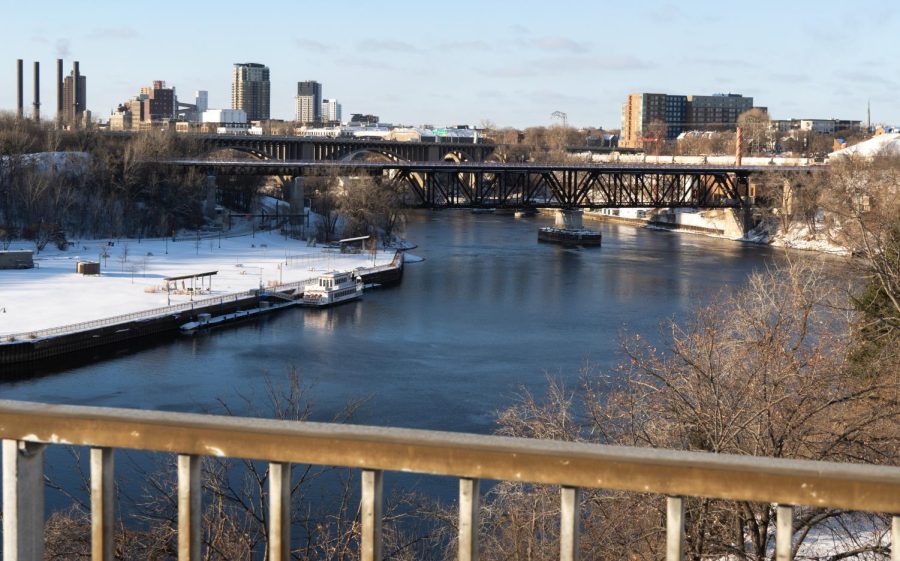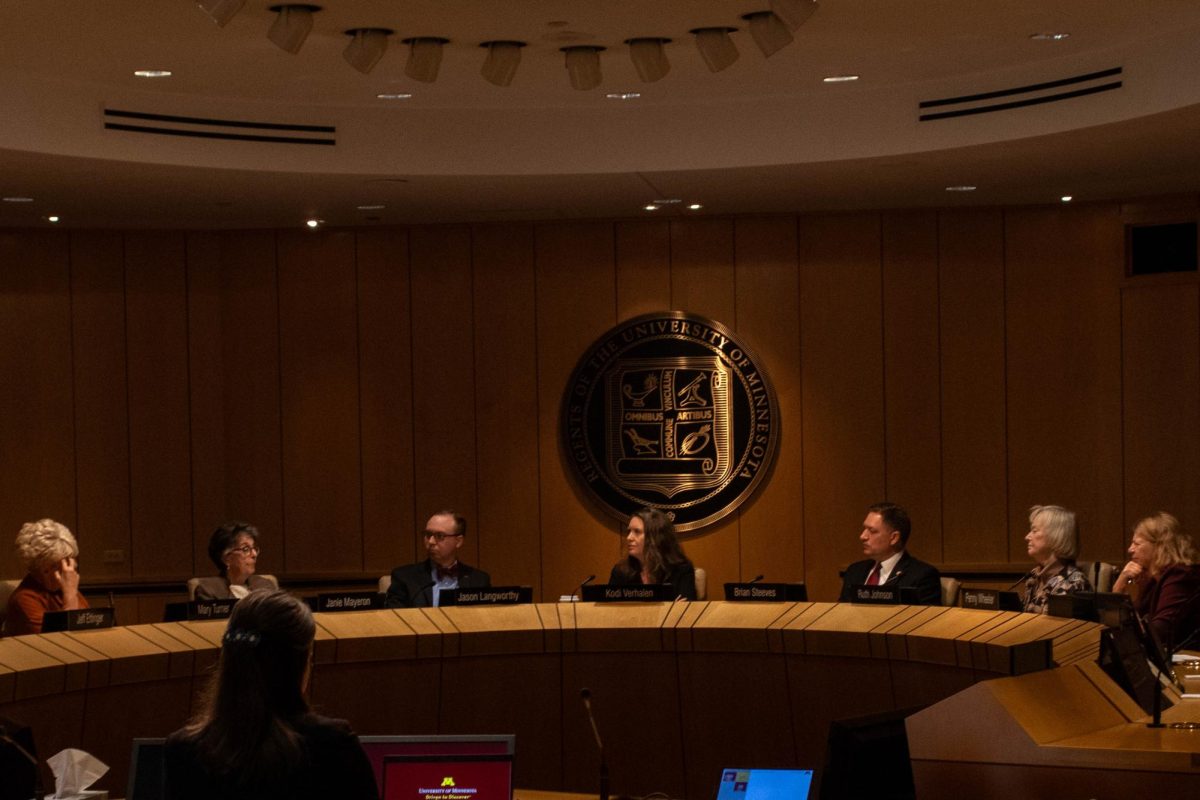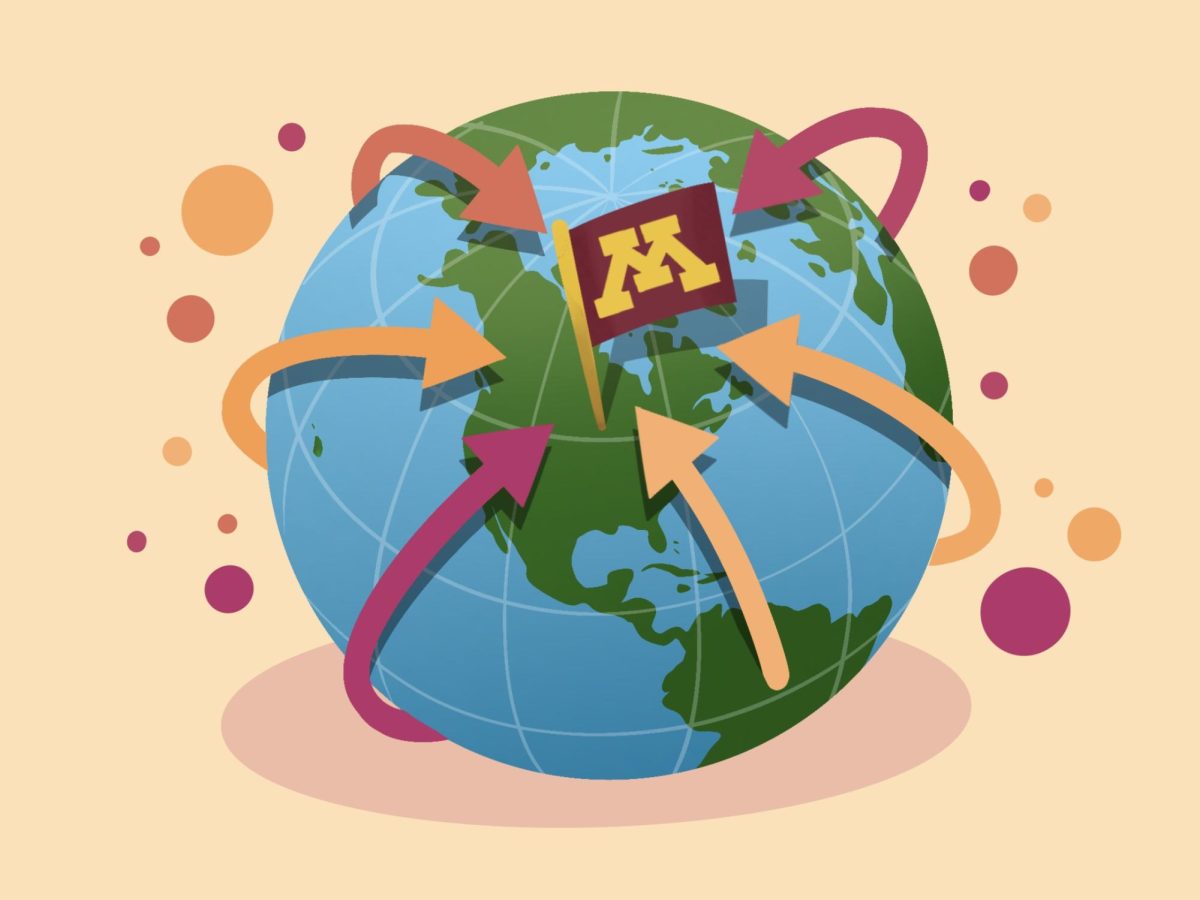The Twin Cities declared its first snow emergency on Nov. 18, raising discussions on alternative de-icing methods and the impact of road salt on water quality. This comes as Minnesota celebrates the 50th anniversary of the Clean Water Act, which seeks to protect U.S. waterways from contaminants
Road salt typically relies on sodium chloride, which can accumulate in soils and waters and negatively impacts the environment, Andy Erickson, research manager at St. Anthony Falls Laboratory, said.
Salt melts ice on the road, which turns to water when the salt breaks into sodium and chloride, Evan Anderson, Minnesota Pollution Control Agency GreenCorps member, said. The dissolved salt goes down storm drain, flows into waterways and can end up in our drinking water.
Since saltwater is more dense than freshwater, it sinks to the bottom near the sediment and freshwater sits on top. This can prevent minerals and oxygen from recycling and can kill fish.
Additionally, if oxygen can’t make it down to the bottom of a lake, it can lead to algae growth and green lakes, Vinicius Taguchi, a doctoral student studying stormwater ponds, said.
The Minnesota Pollution Control Agency’s benchmark is currently one teaspoon of salt per five gallons of water, a level that’s harmful to aquatic life.
“Since the salt dissolves, most of it won’t be visible, but we’re certainly feeling the effects,” Taguchi said. “We’re starting to develop chronic increases in salt concentrations in the lakes.”
Taguchi said he worries people will not care until the problem has become expensive and aquatic life is irreparably harmed.
The sodium in salt also accumulates in soil, which can change the soil properties and limit the amount of water that moves through the soil, Erickson said.
In contrast, chloride typically moves through the soil and environment unmitigated, which can impact waterways and groundwater when it leaches into waterways during melt or rain events, Erickson said.
“We are seeing in Minnesota, specifically, there are a number of water body surface waters that are what we call ‘impaired by chloride,’” Erickson said. “There’s too much chloride in the water to sustain the beneficial properties we want for that water body, whether that’s healthy fish or healthy habitats for the ecosystem biodiversity.”
Since road salting has increased over time, the precipitation in Minnesota is barely enough to flush out the salt, resulting in salt trapped in soils from past years, Erickson said.
“Let’s say we outlawed road salt today … We might have decades worth of salt still in the soil that’s going to continue to transport down to ground water and our drinking water sources for potentially decades to come,” Erickson said.
Alternatives to salt
“I think it’s important to realize that salt is needed just to maintain the level of safety that we currently have on roads,” Anderson said. However, there are no environmentally-friendly de-icers and all salt alternatives will have some impact on the environment, he said.
At the St. Anthony Falls Laboratory, Erickson researches sodium chloride impacts on the environment as well as potassium acetate as an alternative.
The University of Minnesota currently uses untreated sodium chloride and some acetates to melt ice on campus, Tom Ritzer, assistant director of landcare, said.
Sodium chloride salts can typically only melt ice when it’s warmer than 15 degrees Fahrenheit. Other chloride salts such as calcium chloride or magnesium chloride can work at lower temperatures, but they are expensive and have similar environmental impacts, Erickson said.
Many cheap “home-remedies” such as pickle juice, cheese and brine that have been used as de-icing strategies are not better for the environment either because they still contain a significant amount of salt, Erickson said.
One alternative Minnesota used in the past was sand, which increases friction and traction on roadways.
“Sand is an alternative that I like because it’s not going to stay in the water,” Taguchi said. “When the ice is gone, you can sweep up the sand and collect it.”
Taguchi said he believes collecting the sand after is necessary because it can cause flooding in lakes and streams. Sweeping streets and installing stormwater catch basins can prevent sand from entering waterways, he said.
Sand though does not always stick and can bounce off the road when conditions are icy, which defeats the purpose of adding sand for road traction, Erickson said.
The University has researched a Scandinavian technique that directly applies a boiled water-sand mixture to roadways.
“It actually kind of turns an icy roadway into sandpaper, and that’s great for traction,” Erickson said.
The University uses sand when temperatures are at extreme lows and chemicals become ineffective, Ritzer said.
University landcare also has an anti-icing program, which includes applying salt brine before storms to reduce the need for applications later, Ritzer said.
The state of Minnesota has also started using chemical anti-icers as an alternative to salt de-icers, Erickson said.
“These are chemicals that we actually put down before snowfall … they weaken that bond between the ice and the pavement,” Erickson said. “So when the snow plows come through, the snow plows are that much more effective.”
Reducing salt use
Taguchi said since there currently is not a cost-effective solution to generic salt, the best alternative is reducing use. There are also many times salt is being placed on snow that is drivable without salt use.
“I think it’s more of a mindset shift than anything,” Taguchi said.
Salt can also be reused, Anderson said.
“Once all the ice is melted, and you just have salt sitting on your sidewalk or your driveway, just sweep it back up, reuse it for the next storm,” Anderson said.
Erickson said he wants people to recognize stopping chloride usage now will not make the environmental impacts disappear immediately. However, if reducing salt starts now, results will come sooner.
“We have to stay persistent with the cause of reducing road salt … so that we don’t continue to increase the problem for future generations,” Erickson said. “It’s taken us decades to get to this point in the problem and it’s probably going to take decades for us to get out of it.
Erickson said anyone who wishes to learn more should look into the Smart Salting Training and certification program and the Salt Symposium.
Correction: A previous version of this article misspelled Vinicius Taguchi. His last name is Taguchi.














